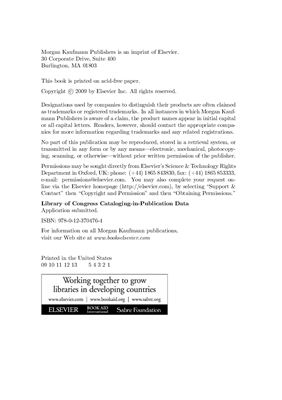Morgan Kaufmann Publishers, 2009. - 400 pages.
The Bayesian network is one of the most important architectures for representing and reasoning with multivariate probability distributions. When used in conjunction with specialized informatics, possibilities of real-world applications are achieved. Probabilistic Methods for BioInformatics explains the application of probability and statistics, in particular Bayesian networks, to genetics. This book provides background material on probability, statistics, and genetics, and then moves on to discuss Bayesian networks and applications to bioinformatics.
Rather than getting bogged down in proofs and algorithms, probabilistic methods used for biological information and Bayesian networks are explained in an accessible way using applications and case studies. The many useful applications of Bayesian networks that have been developed in the past 10 years are discussed. Forming a review of all the significant work in the field that will arguably become the most prevalent method in biological data analysis.
Unique coverage of probabilistic reasoning methods applied to bioinformatics data--those methods that are likely to become the standard analysis tools for bioinformatics.
Shares insights about when and why probabilistic methods can and cannot be used effectively;
Complete review of Bayesian networks and probabilistic methods with a practical approach.
The Bayesian network is one of the most important architectures for representing and reasoning with multivariate probability distributions. When used in conjunction with specialized informatics, possibilities of real-world applications are achieved. Probabilistic Methods for BioInformatics explains the application of probability and statistics, in particular Bayesian networks, to genetics. This book provides background material on probability, statistics, and genetics, and then moves on to discuss Bayesian networks and applications to bioinformatics.
Rather than getting bogged down in proofs and algorithms, probabilistic methods used for biological information and Bayesian networks are explained in an accessible way using applications and case studies. The many useful applications of Bayesian networks that have been developed in the past 10 years are discussed. Forming a review of all the significant work in the field that will arguably become the most prevalent method in biological data analysis.
Unique coverage of probabilistic reasoning methods applied to bioinformatics data--those methods that are likely to become the standard analysis tools for bioinformatics.
Shares insights about when and why probabilistic methods can and cannot be used effectively;
Complete review of Bayesian networks and probabilistic methods with a practical approach.

